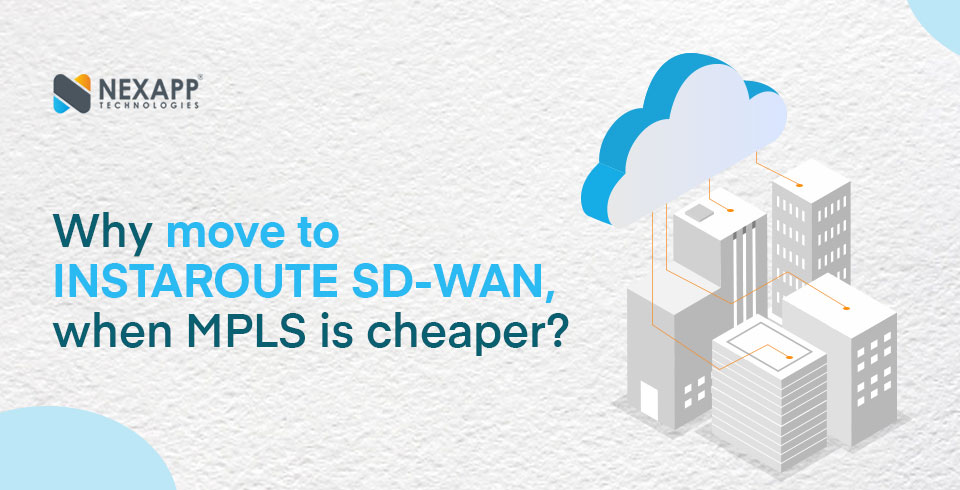
With many countries already adopting the 5G wave, countries like India are clasping hands and awaiting eagerly for this wave to hit us all and bring in the much-needed and much awaited change in the world of technology and networking.
There is no denying that MPLS has been a game changer in the world of networking and connectivity. Since its emergence, MPLS has garnered a lot of trust. Being one of the first ones, there is a blind faith that organizations have on MPLS. The understanding that no matter what, one cannot go wrong with it, also its pocket friendly.
But with changing times, changes in networking and technology are only a natural process now. With businesses evolving, the need to have more robust technology that will help with all the networking needs and at the same time is cost sensitive.
So, if MPLS has it all, and is cheaper, then why go for Instaroute SD-WAN at all?
- Legacy MPLS Architecture – Its been decades now since the design of the legacy MPLS architecture, and it is still being used to connect branch networks to a physical data center. This architecture still believes that traffic first needs to be directed to a physical datacenter.
- Cloud migration – With the world shifting to cloud, legacy MPLS is now becoming irrelevant to many enterprises. The cloud has dramatically shifted the traffic from on-premise datacenters to cloud, eliminating the need for physical datacenters to be the primary provider.
- Work From Home – Ever since the beginning of 2020, with the pandemic hitting the world. Organizations have moved to the work from home model. Not just until the situation resides, but many are considering this to be a permanent work model. With this shift, MPLS links will be sitting idle at the branch sites, and all the datacenter inbound and outbound traffic, which will come via the same firewall will pose scalability, performance and capacity challenges.
- Alignment with business requirements – MPLS being an age old technology, there is a limit in its offerings with regards to aligning customer capacity, quality and availability requirements.
So what is Instaroute SD-WAN bringing to the table?
- Do more with less – With eliminating geographic boundaries and having centralized management, Instaroute SD-WAN makes way for fewer IT professionals to put in manual labor and save time.
- Improves network agility – With the ability to make changes centrally, making Instaorute SD-WAN more flexible in connecting and controlling IoT devices at different sites.
- Cloud adoption – Applications residing on heavy data centers are now shifting to cloud storage, giving direct and timely access to users.
- Application performance – Instaroute SD-WAN is being a supplement to MPLS. One of the main reasons why businesses are making this shift is the ability of Instaroute SD-WAN to direct traffic through various pathways based on priority and application which in turn helps in improving performance.
Hence, even though MPLS is cheaper, technology is evolving and with it businesses as well. With businesses being in control, it gives them space and power to function exactly the way they want to. Thus, it’s time to move on from age-old MPLS and imbibe what is more accessible, user friendly and evolve with the changing times and move to Instaroute SD-WAN.
To know more about SD-WAN and why it is the next big thing, checkout Nexapp Technologies


